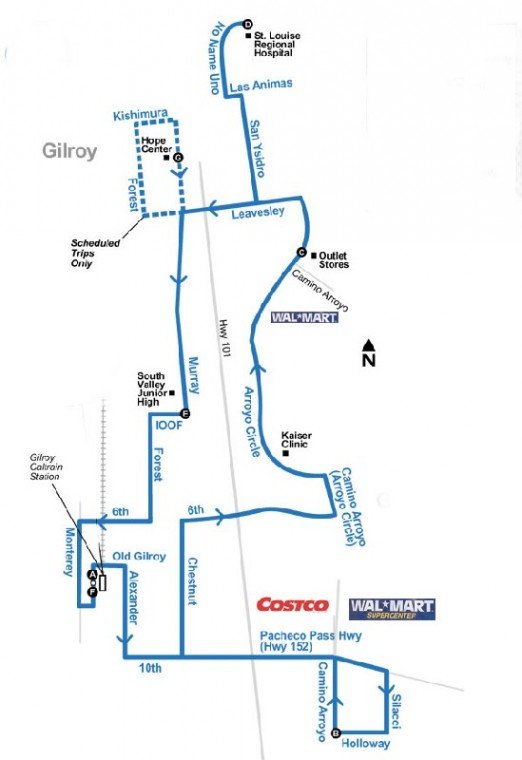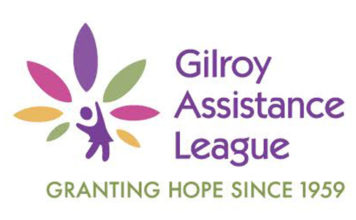Riders Union trying to drum up support and awareness so VTA pays
attention to South Valley
Gilroy – Morgan Hill resident Susan Fent knows the power of speaking out.
An advocate for senior citizens, Fent devotes much of her time to improving transportation for South County seniors, imploring the Santa Clara Valley Transportation Authority to make it easy for the county’s elderly population to get to good nutrition and health care.
And after an especially dark period, when disabled seniors couldn’t get so much as an application for paratransit services, things are brightening. The VTA has made it a little easier for seniors to apply and has, for the moment, stepped away from threats to add a 200 percent surcharge to paratransit services, all because a few concerned citizens and advocates spoke out and told the VTA that what it was doing was wrong.
The threat of a lawsuit helped, too.
“It absolutely works,” Fent said of public advocacy efforts. “Unless you have people willing to take ownership of an issue, the problem continues to go on.”
And as almost any user of public transit in South County knows, there are a lot of problems. Caltrain service has been cut again, bus service is lacking, seniors spread out in rural areas have a hard time getting anywhere and the VTA is perpetually broke and asking voters for more money.
For years, a small circle of concerned citizens has crusaded against what they call VTA mismanagement. But they’re beginning to realize that they’re not powerful enough. And if they have any hope of persuading the VTA to put aside the $4.7 billion BART project, advocates say South County residents need to fight for their services.
One of those crusaders is Eugene Bradley, founder of the VTA Riders Union. He is so disgusted with the way VTA spends tax dollars that he moved from Sunnnyvale to Santa Cruz just so his money wouldn’t be used to fund the agency. He said that VTA board members tend to look at him like he’s crazy when he tells them to forget about BART, and that South County will never get what it needs without public participation.
“It’s going to take a lot of voices to make that happen,” Bradley said. “What disturbs me is that I don’t see anybody from the South County at those meetings.”
And it probably doesn’t help that the VTA gets little attention from Gilroy Mayor Al Pinheiro, who sits on the committee that provides policy recommendations to the VTA board, but hasn’t attended a monthly meeting since March. He said Thursday that he doesn’t spend a lot of time on transportation because he doesn’t hear about it from residents.
“I sit on a lot of boards and I’m usually going to choose an event here over an event that happens there,” Pinheiro said of the VTA’s San Jose meetings. “It’s priorities. It’s not my top priority because of the other things on my plate.”
Pinheiro did attend the meetings in January, February and March. City Councilman Paul Correa, Gilroy’s alternate to the committee, hasn’t attended a meeting this year.
Bradley thinks the mayor is setting a bad example.
“That’s definitely a problem because if he’s not committed to getting better transit in his area, what is he doing on that committee in the first place?” Bradley said. “Mr. Pinheiro needs to get someone on that committee who will represent Gilroy full-time.”
Bradley said he will take his message to the streets of Gilroy and Morgan Hill in coming weeks and he’s trying to build a network of South County residents to write letters to newspaper and pass out flyers.
VTA leaders are currently trying to sell voters on a new sales tax that they say would fund BART and other transit improvements, including more Caltrain service. Those improvements were promised when Measure B won approval in 2000, but BART has not been built and Caltrain service to South County has declined.
The Riders Union has its own plan, one that scraps BART for upgrades in bus services and improvements to other rail systems. Bradley has a vision of 24-hour bus service between Gilroy and San Jose, more local bus routes, and express bus service to supplement Caltrain.
Fent said the first challenges of starting an advocacy campaign are to raise public awareness and convince people to take a stand.
“A lot of it is fear of the unknown,” she said. “You don’t know what’s going to happen when you start advocating. Are you going to make people mad? What does it take to get what you want? In a way, you have to put your reputation on the line.”
And Fent likes to caution people, particularly young, healthy people, that they may need a ride to the grocery store someday, and they’ll be very upset if that ride costs $21, as the VTA is still considering.
“I know people are really stretched out with their own obligations,” she said. “Sometimes there’s a mentality that it won’t happen to me, but we’re all going to get old.”
VTA bus doesn’t even stop at the burgeoning Pacheco Pass retail center
Gilroy – When the new Wal-Mart Supercenter opens next week, it’s sure to be overrun by shoppers eager to check out 220,000 square feet of bargains. None of those people will be taking the bus.
The current store on Arroyo Circle is one of the most popular destinations on Gilroy’s bus lines, but Wal-Mart won’t have any bus service at all when it opens its new store in the Pacheco Pass Shopping Center Wednesday.
The problem? The Camino Arroyo store is on a dead-end street, and there’s no room for a 40-foot Santa Clara Valley Transportation bus to turn around. The VTA will not run busses through parking lots out of safety concerns.
“Now I’ll never get there,” Gilroy resident Betty Kille said Thursday at the Caltrain station. “I go to Wal-Mart all the time.”
And a trip to the new store will be an impossibility for Rosa Duran, a Gilroy resident who doesn’t have a car and is laid up in a wheelchair with a broken leg.
“I always go to Wal-Mart,” she said. “What are people supposed to do who don’t have a car?”
Well, for now, shoppers and Wal-Mart employees who rely on the 17 bus will have to get off in the Gilroy Crossing Shopping Center, take a long walk and risk crossing eight lanes of busy Pacheco Pass traffic.
“It would be a lot better if it stopped in front of the store,” new Wal-Mart employee Francisca Colon said on her way to work. “You can’t cross that street. By the time you get halfway across, the light changes.”
And it’s not just Wal-Mart employees and shoppers who are inconvenienced by the lack of service. Pacheco Pass Shopping Center is home to more than 730,000 square feet of retail space.
Costco, Best Buy and more than two dozen other stores and restaurants employ thousands of workers and attract tens of thousands of shoppers. Some of those establishments have gone without bus service for more than a year.
VTA spokeswoman Jayme Kunz said the solution to the problem is a planned bridge that will cross over Llagas Creek and connect the shopping centers north and south of Sixth Street. But that bridge is at least two years away.
In the meantime, Kunz said, her agency may be able to provide smaller community shuttle buses that can navigate the road leading to the new Wal-Mart. Details of the plan have not been worked out, but the buses would depart from the Caltrain station.
“There are a couple of obstacles that need to be overcome but it looks like that’s the direction we’re moving toward,” she said.
Wal-Mart spokeswoman Amy Hill said she was surprised to learn that the new store won’t have bus service.
“We certainly want our customers to reach our store,” Hill said. “We will speak with the developers and other retailers and see if there’s an interest in working out this problem.”













